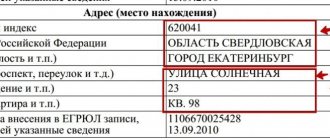Under reorganization in the form of transformation in accordance with Ch. 4 of the Civil Code of the Russian Federation implies a change by a company of its organizational and legal form. The previous company ceases its activities and a new legal entity is created.
At the same time, in the process of reorganizing a legal entity through transformation, the charter and other constituent documents are changed. All rights and obligations from the old company are transferred to the new one.
Unlike other types of reorganization (accession, spin-off, merger), this process begins with one legal entity, but in the end a completely different one is created.
Tax consequences of reorganization in the form of conversion
Art. 50 of the Tax Code of the Russian Federation guarantees to legal entities the observance of rights and legitimate interests by the state. When a company is reorganized, new tax obligations do not arise, but previously arising ones are also not canceled. In accordance with paragraph 1 of Art. 50 of the Tax Code of the Russian Federation, the burden of paying taxes passes to the legal successor. An exception may be cases that involve reorganization in the form of a spin-off, subject to certain reservations.
Taxes, in accordance with paragraph 2 of Art. 50 of the Tax Code of the Russian Federation, the successor will have to pay regardless of whether he is informed about the existence of debt to the budget from the old company or not.
Note!
All responsibilities that the original enterprise had are transferred to the successor, so it is not advisable to carry out this procedure deliberately in order to reduce tax payments.
Tax officials will not be able to fine the successor for the mistakes of its predecessor if no violations were discovered before the reorganization process.
A company that is subject to liquidation is required to prepare final financial statements as of the date that precedes the date of entry on the reorganization. The newly created legal entity is required to provide opening statements, that is, transfer accounting indicators from the final statements of the predecessor company.
After the transformation, the regime of simplified taxation or single tax on imputed income can be used only if the legal successor submits a corresponding application to the tax office. This must be done within five days from the date of creation of the company.
Concept and methods of reorganization of legal entities
Reorganization is the termination of an organization, in which rights and obligations are transferred to other persons, that is, succession.
Methods for reorganizing legal entities are determined by Art. 57 Civil Code of the Russian Federation.
1. Merger - the union of two or more legal entities into a single new legal entity. In this case, the independent existence of the merging organizations ceases. Reorganization of legal entities in the form of a merger is considered completed from the moment of state registration of the newly emerged legal entity.
2. Affiliation - the “infusion” of one or more affiliated organizations into the organization to which the affiliation occurs. In this case, the merging legal entity ceases its activities, all its rights and obligations are transferred to the legal entity to which the merging takes place. Reorganization in the form of affiliation is considered completed from the moment an entry is made in the state register about the termination of the activities of the last of the merging legal entities.
3. Division – formation on the basis of a defunct legal entity of two or more independent legal entities. During division, a previously existing legal entity ceases its activities, and its rights and obligations are transferred to the newly created legal entities. Reorganization in the form of division is considered completed from the moment of state registration of the last of the newly emerged legal entities.
4. Spin-off – the formation of new independent legal entities, while the reorganized legal entity continues to function, and part of its rights and obligations passes to the newly formed legal entities. Reorganization in the form of separation is considered completed from the moment of state registration of the last of the newly emerged legal entities.
5. Transformation – termination of a legal entity and the emergence of a new legal entity on its basis. Reorganization in the form of transformation is considered completed from the moment of state registration of the newly created legal entity.
In case of reorganization in the form of merger, accession, transformation, succession is formalized by a transfer act, in case of division and separation - by a separation balance sheet. The transfer deed and the separation balance sheet must contain provisions on the succession of all obligations of the reorganized legal entity in relation to all its creditors and debtors, including obligations disputed by the parties. These documents are approved by the founders (participants) of the legal entity or the body that made the decision on the reorganization (Article 59 of the Civil Code of the Russian Federation).
Features of reorganization in the form of transformation
After reorganization through transformation, the activities of the old legal entity are terminated and a new company is created. The company details are being changed. The assigned individual taxpayer number of the transformed company is excluded from the unified state register, after which the legal successor receives its TIN. If the legal form of a company changes without reorganization, the TIN does not change. For example, if a CJSC is formed from an OJSC, then no changes are made to the register.
The reorganization of a company, carried out in the form of a transformation, is considered from a legal, economic and macroeconomic point of view.
From a legal point of view, after the reorganization, a new company is formed, inheriting all the assets and liabilities of the old one.
From an economic point of view, the internal structure, management and organizational and legal structure of the created company changes, but all other areas of activity remain the same.
From a macroeconomic point of view, the company's balance sheet does not change, so the transformation will be a neutral process for it.
For business owners who would like to expand their activities and have reached the maximum number of participants, changing the organizational and legal form will be useful. But not in all cases, the transformation of the company will indicate the impending consolidation of the company.
Types of reorganization
According to Art. According to the Civil Code of the Russian Federation, reorganization of a legal entity is possible in the following options:
- Merger – several legal entities form one new legal entity; the property, rights and obligations of each of them are transferred to the newly created organization;
- Merger – a new one is joined to an existing legal entity by transferring all its assets and liabilities. In this case, the first legal entity continues to exist, and the second is excluded from the Unified State Register of Legal Entities.
- Division is the formation of several new ones from one organization.
- Spin-off is the formation of new organizations on the basis of an existing company, without terminating its registration;
- Transformation is a change in the organizational and legal form of a legal entity.
Let us note that the current legislation provides for the rights of business owners to independently choose which forms of reorganization of a legal entity are most suitable for them. In this case, it is possible to use several forms at the same time, for example, changing a joint-stock company to an LLC with a simultaneous merger with another LLC.
When determining the most optimal types of reorganization of legal entities for business, one should take into account their specific features, which can have a significant impact on the further development of the enterprise. This is especially true recently, when tax authorities strictly control any business reorganization.
The legislation provides for situations when forced reorganization of a legal entity is carried out. For example, at the request of the Federal Antimonopoly Service, the court may make a decision on reorganization (division, spin-off) in relation to a company with a dominant position in the market, provided that this company abuses it or violates other requirements of antimonopoly legislation (Article of the Law of the Law “On Protection of Competition” " dated July 26, 2006 No. 135-FZ). By the way, in some cases the consent of government agencies may be required, incl. FAS, to carry out the reorganization procedure (for example, during the merger of large companies with large market shares in a certain area).
Reasons for reorganization
Most often, affiliation is used so that companies can, by combining their statutory goals, achieve the most effective result in the use of assets.
A legal entity usually plans a reorganization based on several reasons:
- a drop in demand for manufactured products or services provided. With the help of reorganization it will be possible to modernize production and equipment. This will improve the competitiveness of products;
- business takeover. A stronger company, in order to increase competitiveness, absorbs another;
- business division. If the founders cannot agree among themselves, they have the right to divide their assets;
- withdrawal of assets from the circulation of a legal entity. It is not easy to do this without breaking the law. But when creating a new legal entity, you can transfer part of the assets to it;
- transfer of assets to third parties. This option is appropriate in case of a ban on transactions for the initially created legal entity;
- use of special tax regimes or application of tax benefits. This leads to an increase in production volumes and overall profit of the company.
Enterprise reorganization
Reorganization of an enterprise through division
Reorganizing an enterprise through division means splitting it into smaller parts. This type of reorganization of an enterprise causes the division of all its rights and obligations between the resulting legal entities. With this type of enterprise reorganization, a separation balance sheet is created.
When reorganizing an enterprise by division, new legal entities are created, and the reorganization of the enterprise is considered completed at the moment when the newly formed enterprises undergo state registration.
The separation balance sheet must indicate to what extent each new legal entity inherits the duties and rights of the enterprise that existed before the reorganization, as well as its debts and obligations.
The separation balance sheet is a mandatory document for submission for registration of newly created legal entities at the site of the enterprise undergoing reorganization.
Reorganization of an enterprise through division can occur without the consent of the enterprise, on the basis of a decision of the Antimonopoly Committee, court and other bodies
Procedure for reorganization by transformation
The reorganization procedure in the order of transformation includes several stages.
- the founders must make a decision on reorganization at a general meeting of owners. At the same meeting, the company’s charter is agreed upon, the terms of the meeting are discussed, the participants decide on the exchange of contributions and shares in the authorized capital of the future company;
- The tax office must be informed in writing about the start of the procedure within three days. Having received the notification, the tax authority makes an entry in the unified state register of legal entities about the beginning of the reorganization procedure;
- Twice (once a month) a message about the ongoing reorganization is made to creditors in the media. Having received the messages, creditors have the opportunity to demand early repayment of debts within a month after the last announcement;
- election of company management. According to the law, enterprises with different organizational forms have different structures. The responsibilities of the board of founders include determining the composition of managers, instructing management to complete all actions to register the transformation (receiving creditors’ demands for fulfillment of obligations, compiling a register of counterparties, amounts to be paid);
- drawing up reconciliation reports and signing them with partners;
- repayment of accounts payable before completion of the procedure;
- accounting of property, debt and other obligations;
- drawing up and approval of the transfer act. In the absence of this document, the state body has the right to refuse registration of the reorganization. The act must include the following information:
- general information about the enterprise;
- financial performance report;
- gear balance;
- explanations;
Termination of the company's activities is confirmed by the issuance of an appropriate certificate. After receiving it, actions are carried out in the following order:
- deregistration with the tax inspectorate, extra-budgetary funds, statistics agency;
- closing all accounts;
- destruction of the seal.
After this, the newly created legal entity performs the following actions:
- re-registration in all institutions as a new legal entity;
- printing production;
- opening an account.
Enterprise reorganization
Reorganization of an enterprise through merger
When an enterprise is reorganized through a merger, several legal entities are liquidated, and in their place a new organization is created, to which the rights and obligations of each enterprise undergoing the reorganization are transferred.
When reorganizing an enterprise through a merger, a transfer act is also drawn up.
This act states that the newly formed enterprise is the legal successor of the rights and obligations of all enterprises that have gone through reorganization. Without such a transfer deed, registration of the created legal entity is impossible.
In some cases, if the assets of the created enterprise exceed a certain amount, the reorganization of the enterprise by merger requires notification of the Antimonopoly Committee within the period specified by law after entering the relevant information about the reorganization of enterprises into the unified register of legal entities.
Reorganization of an enterprise through transformation
Reorganization of an enterprise through transformation means a reorganization in which the organizational and legal form of the enterprise changes. In this case, the reorganization may not affect either the number of participants in the enterprise or its property, but the legal regime of the enterprise’s activities, the procedure for managing its property, the procedure for the operation of the enterprise, the procedure for resolving some organizational issues of its functioning, formation and liquidation are changing.
When reorganizing an enterprise through transformation, a corresponding transfer act is created, according to which all the rights and obligations of the reorganized enterprise are transferred to the new enterprise.
Thus, when an enterprise is reorganized through transformation, the old enterprise disappears, and in its place a new one is formed - with a different organizational and legal form.
Reorganization of an enterprise through transformation is considered completed when appropriate changes are made to the unified register of legal entities.
If the reorganization concerned an enterprise that issued a license to engage in its type of activity, then after the reorganization and change in the organizational and legal form of the enterprise, the license must be reissued to a new legal entity.
Required list of documents
Registration of transformation after liquidation of an enterprise is carried out after the following documents are submitted to the tax service:
- application in the established form (P12001) with the signature of the applicant. Such a statement must be submitted for each newly created company;
- The set of documents of the reorganized enterprise must include:
- TIN;
- statistics codes;
- charter;
- extracts from the register of legal entities;
- OGRN certificates.
Note!
Originals or copies certified by a notary must be submitted to the tax office.
You must provide two copies of the following documents.
- decisions of the founders on the reorganization of the enterprise;
- receipt (check) to confirm payment of state duty;
- a transfer deed containing all the necessary information;
- a certificate confirming the absence of debt to the pension fund;
- balance sheet (copy) for the latest reporting period;
- information about accounts payable;
- contact details.
For a newly created company, the following information is required:
- full and abbreviated name;
- activity codes;
- legal address;
- the size of the authorized capital with the specified form of payment;
- information about the manager indicating the name of his position;
- information about the chief accountant;
- information about the founders and their shares in the authorized capital;
- information about the bank where you plan to open an account;
- contact details.
After providing the above documents and the necessary information, the reorganization of the enterprise is registered by the tax authorities.
Timing of reorganization by transformation
In accordance with paragraph 1 of Art. 60 of the Civil Code of the Russian Federation, state registration of a company created in the process of reorganization through transformation occurs after making an entry in the unified state register of legal entities.
The application form P12003 is considered within three working days, and within the same period a change is made to the state register. The application form P12001 for state registration of legal entities created through reorganization through transformation is considered within five working days.
Note!
The minimum duration of the procedure will be 3.5 months, not counting the period for preparing a meeting of shareholders or members of the company.
Carrying out reorganization through transformation, merger, division, separation has distinctive features. Therefore, to carry out this procedure, it is better to use the help of our lawyers. In this case, professional specialists will provide a list of necessary services and carry out reorganization in accordance with the requirements established by law. This will eliminate possible risks associated with violation of the procedure and refusal to register the transformation of the company.
Procedure and types of reorganization of legal entities
The following types of reorganization are distinguished:
- voluntary reorganization is carried out by decision of the founders (participants) of a legal entity or a body authorized to do so by the constituent documents.
- forced reorganization is carried out by decision of an authorized state body or by a court decision in cases expressly specified in the legislation.
So, in accordance with Art. 19 of the Law of the RSFSR “On Competition and Restriction of Monopolistic Activities in Commodity Markets”, the Federal Antimonopoly Service of the Russian Federation may decide on the forced division or spin-off of an economic entity that occupies a dominant position in the commodity market and abuses its position. The decision of the state body must determine the period of reorganization. If the founders (participants), or the body authorized by them of the legal entity itself, do not carry out the reorganization within the specified period, the court, at the request of the authorized state body, appoints an external manager who is entrusted with carrying out the reorganization. From the moment the external manager is appointed, the authority to manage the affairs of the legal entity is transferred to him. Court approval of the separation balance sheet and constituent documents is the basis for state registration of newly emerged legal entities (Article 57 of the Civil Code of the Russian Federation).
In certain cases, the consent of government authorities for reorganization is required. In accordance with Art. 17 of the RSFSR Law “On Competition and Restriction of Monopolistic Activities in Commodity Markets,” the antimonopoly authorities are entrusted with exercising control over reorganization in the form of mergers and acquisitions of commercial organizations, the total book value of assets of which, according to the latest balance sheet, exceeds 30 million of the minimum wage established by federal law.
The body that made the decision on reorganization is obliged to send written notice to creditors about this. Creditors have the right to demand termination or early fulfillment of an obligation for which the reorganized commercial organization is the debtor, as well as compensation for losses caused by early fulfillment or termination of the obligation. In addition, if the separation balance sheet does not make it possible to determine the legal successor of the reorganized legal entity, the newly created legal entities bear joint liability for the obligations of the reorganized legal entity to its creditors (Article 60 of the Civil Code of the Russian Federation).
State registration of legal entities created through reorganization is carried out in accordance with the Civil Code of the Russian Federation and the Federal Law “On State Registration of Legal Entities and Individual Entrepreneurs”. The following shall be submitted to the registration authority (tax authorities):
- an application for registration of each newly emerged legal entity created through reorganization, which confirms that the constituent documents of legal entities created through reorganization comply with the requirements established by the legislation of the Russian Federation for the constituent documents of a legal entity of a given organizational and legal form, that the information contained in these constituent documents and the application for state registration, are reliable that the transfer act or separation balance sheet contains provisions on the succession of all obligations of the newly emerged legal entity in relation to all its creditors, that all creditors of the reorganized entity are notified in writing about the reorganization and, in cases established by law, issues of reorganization of the legal entity persons have been agreed upon with the relevant government bodies and (or) local government bodies;
- constituent documents of each newly emerging legal entity (originals or notarized copies);
- decision on reorganization of a legal entity;
- merger agreement in cases provided for by federal laws;
- transfer deed or separation balance sheet;
- document confirming payment of state duty.
State registration is carried out at the location of the reorganized legal entities. The registration authority makes a decision on state registration of a newly emerged legal entity (entities) or on refusal of state registration within a period of no more than five working days. If the decision is positive, this body makes an appropriate entry in the register and issues a certificate of registration.









